Most 1959 nickels are worth only face value unless in pristine, uncirculated condition. The 1959-D (Denver Mint) had over 160 million minted, while the 1959 no mint mark (Philadelphia) is similarly common. No major errors like double dies exist for this year, though minor die varieties may occur. Circulated coins are worth 5 cents, but high-grade uncirculated examples (MS-65 or higher) can command premium prices. Value depends heavily on condition and preservation rather than errors. Collectors should focus on finding coins in exceptional grades rather than searching for rare error varieties with this particular year.
That 1959 nickel sitting in your drawer is probably worth exactly five cents, but before you spend it, understanding which varieties hold premium value could make the difference between pocket change and a collector’s prize. While 1959 nickels lack the dramatic error varieties that make headlines, pristine examples from both Philadelphia and Denver mints command surprising prices when graded properly.
Understanding the 1959 Jefferson Nickel Production
The United States Mint produced Jefferson nickels at two facilities in 1959, creating two distinct varieties. The Philadelphia Mint struck coins without a mint mark, while the Denver Mint added a small “D” on the reverse, near Monticello’s right side. Denver dominated production with over 160,476,000 nickels compared to Philadelphia’s 27,248,000 pieces.
This massive production volume means circulated examples from both mints remain extremely common today. The composition stayed consistent with earlier Jefferson nickels: 75% copper and 25% nickel, weighing 5 grams with a diameter of 21.2 millimeters. Felix Schlag’s design, featuring Thomas Jefferson’s profile on the obverse and his Virginia estate Monticello on the reverse, continued unchanged from previous years.
The high mintage numbers directly impact collectibility. When hundreds of millions of coins enter circulation, only the finest preserved examples maintain numismatic value above face value. This makes condition absolutely critical for 1959 nickels.
What Your 1959-D Nickel Is Actually Worth
Despite being the more common variety, most 1959-D nickels in average circulated condition trade for exactly $0.05. The sheer quantity produced means dealers and collectors show little interest in worn examples. However, condition transforms everything in the coin market.
Here’s the realistic value breakdown for 1959-D nickels:
| Grade | Condition | Estimated Value |
|---|---|---|
| G-4 to F-12 | Heavily circulated | $0.05 |
| VF-20 to EF-40 | Moderate wear | $0.10-$0.25 |
| AU-50 to AU-58 | Light wear, luster visible | $0.50-$1.00 |
| MS-60 to MS-63 | Uncirculated, some contact marks | $1.50-$3.00 |
| MS-64 | Uncirculated, minimal marks | $5.00-$8.00 |
| MS-65 | Gem uncirculated, excellent eye appeal | $15.00-$25.00 |
| MS-66 | Premium gem quality | $45.00-$75.00 |
| MS-67 | Superb gem, exceptional | $150.00-$300.00 |
The jump in value becomes significant only at Mint State 65 and higher. A 1959-D graded MS-67 by Professional Coin Grading Service (PCGS) or Numismatic Guaranty Company (NGC) can reach $250-$300 at auction, according to recent Heritage Auctions sales data. An MS-68 example, exceptionally rare, sold for approximately $1,200 in 2022.
Full Steps designation adds premium value. Jefferson nickels showing complete, unbroken steps on Monticello’s staircase receive this designation, indicating sharp strike quality. A 1959-D graded MS-65 Full Steps might bring $40-$60 compared to $20 for a regular MS-65.
Philadelphia Mint Examples Without Mint Marks
The 1959 nickel without a mint mark comes from Philadelphia and actually represents the scarcer variety with only 27 million minted. Despite lower production, these coins remain readily available in circulated grades because millions still survive.
Value progression mirrors the Denver issues closely:
| Grade | Condition | Estimated Value |
|---|---|---|
| G-4 to VF-20 | Circulated | $0.05-$0.15 |
| EF-40 to AU-58 | About uncirculated | $0.50-$1.25 |
| MS-60 to MS-63 | Basic uncirculated | $2.00-$4.00 |
| MS-64 | Choice uncirculated | $6.00-$10.00 |
| MS-65 | Gem quality | $20.00-$30.00 |
| MS-66 | Premium gem | $60.00-$100.00 |
| MS-67 | Superb gem | $200.00-$400.00 |
Philadelphia strikes occasionally command slightly higher prices in top grades due to lower original mintage, but the difference rarely exceeds 10-20%. A spectacular MS-67 Full Steps example from Philadelphia sold for $480 through Stack’s Bowers in 2023, representing the high end for this date.
The real value lies in population reports. PCGS has graded fewer than 100 examples in MS-67 condition across both mint marks combined, with perhaps a dozen achieving MS-68. This scarcity drives prices when pristine examples appear at auction.
The Truth About 1959 Nickel Errors
Unlike some Jefferson nickel dates featuring dramatic doubled dies or off-center strikes, 1959 produced remarkably clean coins with virtually no significant error varieties. Collectors searching for valuable 1959 nickel errors will find disappointment rather than treasure.
No authenticated major errors exist for this date. There are no doubled dies listed in authoritative references like the Cherrypickers’ Guide to Rare Die Varieties. No repunched mint marks have gained recognition. No significant off-center strikes or broadstrikes appear in major auction records.
Minor die varieties do exist but carry minimal premium. Light die cracks, die chips, or minor die doubling on letters might show under magnification, but these imperfections rarely add value. A 1959 nickel with a small die crack typically sells for the same price as any other example in equivalent condition.
What about other error types? Planchet errors like clipped planchets or wrong planchet strikes remain theoretically possible but extraordinarily rare for 1959. A genuine off-center strike showing 10-20% of the design missing might bring $25-$75, while a major off-center error (50% or more) could reach $150-$300. However, finding such pieces requires searching thousands of coins.
Strike-through errors, where foreign material creates incused designs, occasionally appear but typically add only $5-$15 to a coin’s value unless particularly dramatic. The same applies to grease-filled dies creating weakly struck areas.
Grading Your 1959 Nickel Accurately
Determining whether your 1959 nickel deserves professional grading requires honest assessment. Professional grading costs $20-$40 per coin at minimum, making it economically sensible only for coins worth at least $50-$75.
Examine these key areas under good lighting with at least 5x magnification:
Jefferson’s cheekbone and hair detail: Mint State coins show complete hair strands with no wear. About Uncirculated coins display slight flattening on the highest hair points. Circulated examples show progressive smoothing across the cheek and hair.
Monticello’s steps: This critical area determines Full Steps designation. Count the horizontal lines forming the staircase. Full Steps requires five or six complete, unbroken steps with clear separation. Many 1959 nickels show weak step detail even in uncirculated condition due to die wear or strike weakness.
Overall luster: Mint State coins display satiny luster across entire surfaces. Any wear breaks this luster, creating dull spots that identify circulated coins. Rotating the coin under light reveals luster cartwheel effect on true uncirculated pieces.
Contact marks: Every small nick or scrape lowers the grade. MS-65 coins show minimal marks visible only under magnification. MS-63 examples display several scattered marks visible to naked eye. MS-67 coins appear nearly flawless.
Realistic expectations matter. Perhaps 1 in 500 circulated 1959 nickels grades About Uncirculated. Maybe 1 in 1,000 qualifies as Mint State. Finding a gem MS-65 or better in loose change is lottery-level odds.
Building Value Through Smart Collecting
Rather than hoping for phantom errors, 1959 nickel collectors build value through strategic acquisition. Focus on certified examples graded MS-65 or higher, preferably with Full Steps designation. These coins provide actual investment potential and trade actively in the numismatic market.
Roll searching offers slim but real possibilities. Original bank-wrapped rolls from 1959 occasionally surface at estate sales or in collections. A genuine unsearched roll might contain several Mint State examples, though expecting gems requires luck. Expect to pay $15-$30 for Denver rolls and $25-$50 for Philadelphia rolls when available.
Registry set collecting drives demand for top-tier examples. PCGS and NGC maintain competitive registries where collectors showcase their finest coins. This competition pushes MS-67 and MS-68 prices upward as serious collectors pursue high-grade examples for their sets.
Building a type set represents another approach. Include one high-grade 1959 nickel as part of a complete Jefferson nickel collection spanning 1938 to present. This educational approach provides collecting satisfaction while building a diverse portfolio less dependent on any single date.
Maximizing Returns When Selling
If you’ve identified a potentially valuable 1959 nickel, selling strategy determines your actual return. That MS-66 Full Steps nickel worth $75 wholesale might bring only $40 if sold improperly.
Professional grading becomes essential for coins worth $50 or more. A raw (ungraded) coin claiming MS-66 quality faces skepticism and price resistance. The same coin in a PCGS or NGC holder sells quickly at fair market value because buyers trust third-party authentication.
Selling venues matter significantly. Local coin shops typically pay 50-70% of retail value, offering immediate payment but lower returns. Online marketplaces like eBay reach broader audiences but involve fees around 13-15% and require photography, listing, and shipping effort.
Major auction houses like Heritage, Stack’s Bowers, or Great Collections provide optimal prices for premium examples graded MS-66 or higher. They charge seller’s fees of 10-20% but attract serious collectors willing to pay strong prices. Auctions require patience, with 4-8 weeks typical from consignment to payment.
For coins worth under $50, dealer direct sales or online marketplaces make most sense. The auction house approach works best for exceptional pieces likely to generate bidding competition among serious collectors.
Where to Find the Real Value
Stop searching for mythical 1959 nickel errors and start understanding what actually drives value in this series. The money lies in preservation, not anomalies. A perfectly preserved MS-67 Full Steps example from either mint represents genuine numismatic value, while worn coins with minor die cracks remain five-cent pieces regardless of how interesting they look under magnification.
Build your collection around certified, high-grade examples with strong eye appeal. Learn to recognize Full Steps quality and understand how populations drive pricing. This knowledge-based approach delivers more consistent results than endlessly searching circulated coins for errors that don’t exist. The 1959 nickel offers modest collecting opportunities for those willing to pursue quality over fantasy.
You may be interested:
- 1859 Indian Head Penny Coin Value Complete Errors List And No Mint Mark Worth Guide For Collectors
- 1911 V Nickel Coin Value Guide Complete Errors List And No Mint Mark Worth Today
- 1902 Dime Coin Value Complete Errors List With O S And No Mint Mark Worth Guide
- 1788 Quarter Coin Value Complete Guide Errors List And D S P Mint Mark Worth Revealed
- 1776 To 1976 Bicentennial Half Dollar Coin Value Complete Errors List And What Your D S And No Mint Mark Coins Are Actually Worth
- 1990 Penny Coin Value Errors List How D S And No Mint Mark Pennies Are Worth Thousands Of Dollars

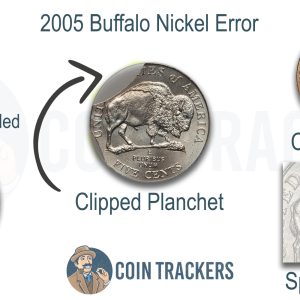
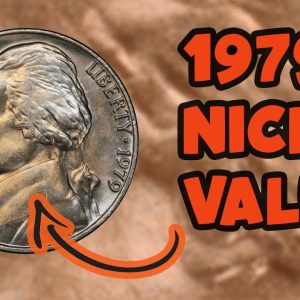
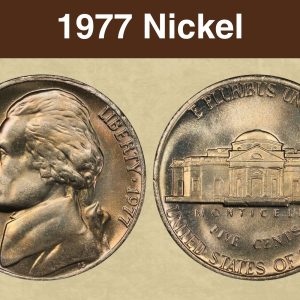
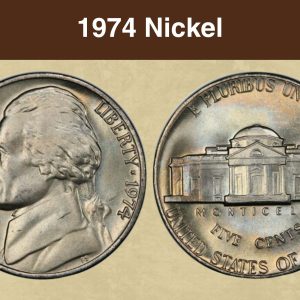
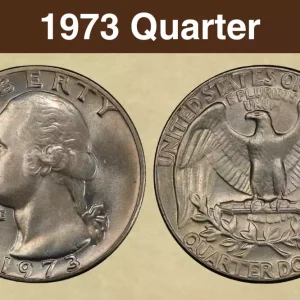
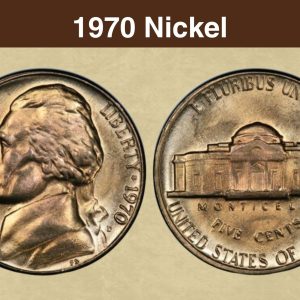
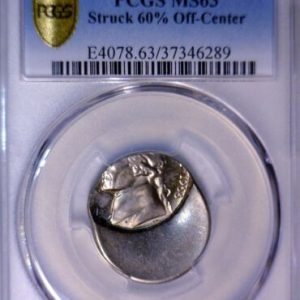
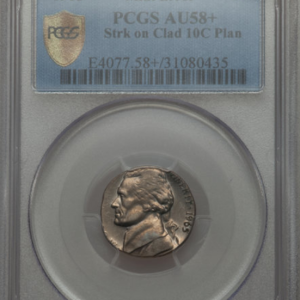
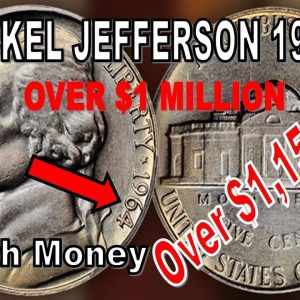
What is a 1959 nickel with no mint mark worth?
A 1959 nickel with no mint mark is not inherently valuable; it is a common coin with a value of less than a dollar, unless it’s in pristine condition or is a rare error coin. The 1959-D (Denver) nickel has a known minting, but there are also unconfirmed reports of a 1959 Philadelphia (no mint mark) version, though some sources indicate that all 1959 nickels were minted in Denver or San Francisco, not Philadelphia.
What nickel error to look for?
Key nickel errors to look for include doubled dies, where design elements are doubled due to die strikes, off-center strikes, where the coin is struck outside its intended position, and mint mark errors, such as doubled or missing mint marks. Other valuable errors are speared bison on 2005 nickels, the 1943 double die Jefferson nickel, and 1937-D Buffalo nickel three legs.
How much is a 1959 No mint mark worth?
But the coin still sold for over $38,000. At auction now why would a 1959 penny sell for $38,000. Well because it all depends on the grade. Population.